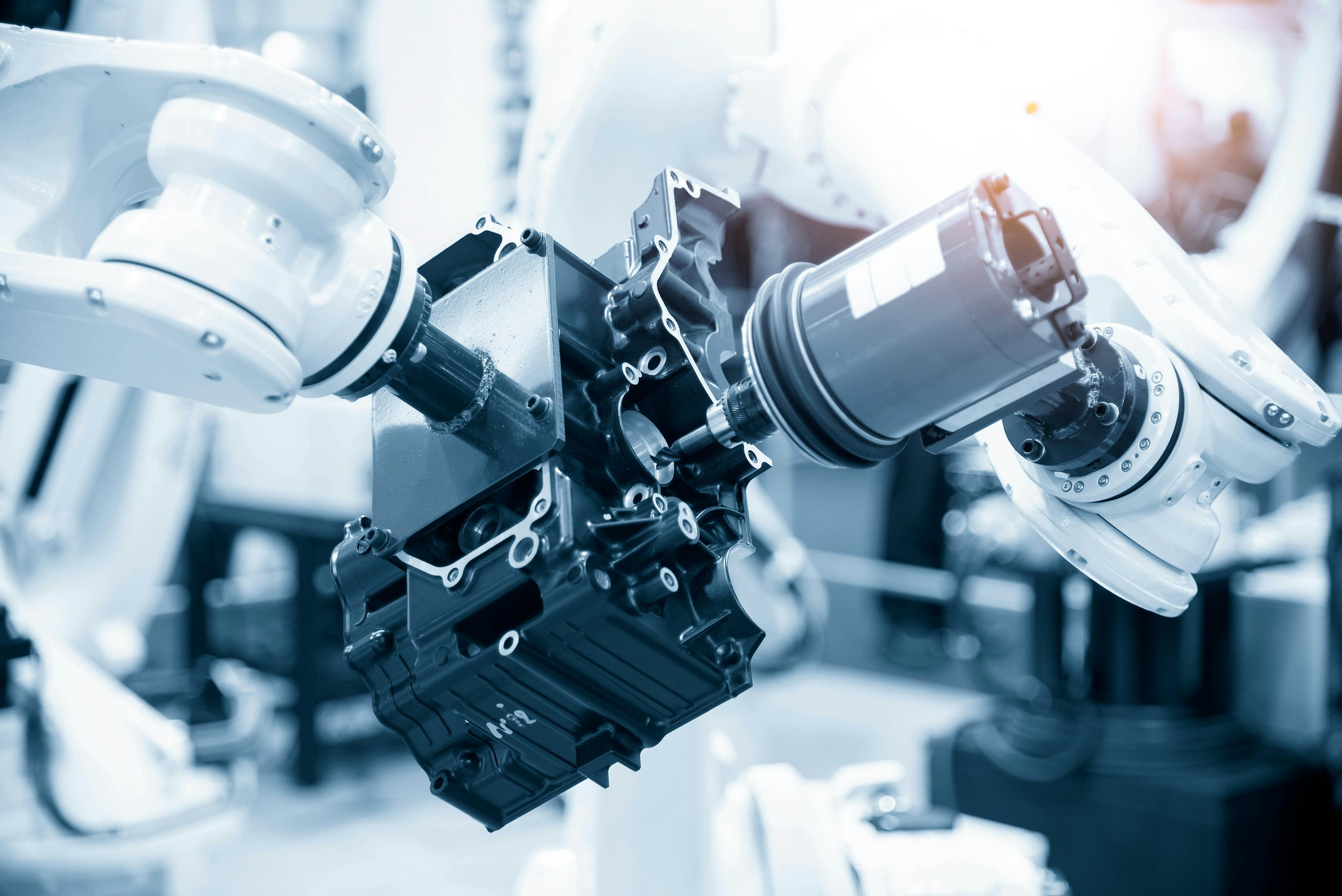Article
– A management guide to integrating automation in intralogistics
Published
26 February 2024
The landscape of Supply Chain 4.0 and subsequent warehouse innovation is being reshaped by a concept that is as radical as it is silent: lights-out operations. This transformative approach envisions facilities so advanced that they could function autonomously – without a single light needed to guide human hands.
Imagine warehouses where magic happens: robots process, pick and pack orders, systems self-adjust for optimal performance, maintenance systems predict and prevent failures before they occur – and operators are alleviated from strains associated with repetitive, monotonous tasks.
Sounds too good to be true? The future is here.
The drive towards automation
As the industrial world pivots towards digitally- and technology-enabled operations, a range of compelling factors are driving businesses to embrace automation in warehousing. These key drivers are not just reshaping the operational landscape but are also setting the stage for a more efficient, accurate and cost-effective future.
We see ten key drivers for warehouse automation:
1. Technological advancements
Automation is made more accessible and capable than ever before by the rapid development of technologies such as robotics, artificial intelligence (AI), machine learning (ML) and the Internet of Things (IoT). These technologies are now sophisticated enough to handle and learn complex tasks that were once deemed possible only with human intervention.
2. Labour costs and availability
As labour costs continue to rise and skilled workers become harder to find, automation presents a viable solution to maintain productivity without the constraints associated with human labour, such as turnover, training and the need for supervision.
3. Enhanced productivity and efficiency
Automated systems can operate 24/7 with minimal downtime. They are designed to perform tasks with greater consistency than human workers, thus significantly increasing productivity and operational efficiency.
4. Consistency and quality control
Automation ensures that each task is performed identically and to the highest quality standards, reducing the margin for error and enhancing the overall quality of outputs.
5. Health and safety
Automating dangerous or repetitive tasks can greatly reduce workplace accidents and associated costs. Robots and automated systems can work in hazardous environments, reducing health and safety risks for human workers.
6. Scalability and flexibility
Automation allows for rapid scaling of operations to meet fluctuating demand. Automated systems can be programmed to handle different tasks and products, providing the flexibility needed to adapt to market changes.
7. Competitive advantage
In a highly competitive market, automation can be a differentiator, enabling businesses to fulfil orders more quickly, accurately and at a lower cost than competitors who rely on manual processes.
8. Customer expectations
Customers are demanding faster and more reliable services. Automation helps businesses meet these demands with greater accuracy and shorter lead times, thus improving customer satisfaction and retention.
9. Data-driven decision-making
With the advent of big data analytics, automation systems can provide valuable insights that inform strategic decision-making. Real-time data collection and analysis enable proactive management and continuous improvement of operations.
10. Sustainability
Automation can contribute to sustainability goals by optimising energy usage, reducing waste and ensuring precise material handling, thereby decreasing the environmental footprint of warehouse and operations activities.
Level of integration: the backbone of lights-out operations
Integral to achieving lights-out operations is the seamless integration within intralogistics, encompassing material handling, transport and storage. Such integration ensures that every automated component communicates effectively, creating a symphony of orchestrated activities. From conveyor systems to automated guided vehicles (AGVs) or autonomous moving robots (AMRs) that move goods with precision and just in time when needed, the level of coordination and integration is paramount. Carton erectors, packaging machines, robotic arms and shuttles interact with smart storage systems, ensuring that every item is placed and retrieved with spot-on timing and accuracy, consistently controlled, initiated and coordinated by sensors. The top goal is to optimise the flow of goods and quality of output – all towards perfect order fulfilment. Process breaks and the need for human intervention belong to the past.
But in all honesty: what is the best-fit solution according to companies’ specific needs, processes, products, handling and transport units, site legacies etc.? What is the cost-effectiveness and financial viability of such? Where does it make sense to look for automation, and what is the best level of integration? The answer is manifold – and even incremental steps and pilots to warehouse efficiency and specific use cases lead to tangible improvements.
Figure 1: Warehouse operations enabled by technology
Balancing act: technology, operational processes and people
The transition to lights-out operations is not just about deploying technology. It is about achieving a delicate balance between technology, operational processes and people capabilities. The most sophisticated machines are only as effective as the processes they are designed to enhance – and those processes must be meticulously engineered to accommodate the speed and efficiency that automation brings. Real-time data and a strong digital system backbone are the maestro of this symphony, guiding each element to perform its role precisely when needed.
People remain at the heart of this transformation. Their capabilities must evolve in tandem with the technology, transitioning from executing repetitive tasks to more strategic, analytical roles that oversee automated systems. Training and development become critical, ensuring that the workforce is not only competent in new technologies but is also adaptable and skilled in problem-solving within an automated environment.
Figure 2: The intralogistics employee of the future
The role of management executives
For management executives, the challenge is to orchestrate this balance while moving towards the goal of warehouse efficiency and, ultimately, lights-out operations. It requires a visionary approach that recognises the intricate interplay between these elements:
- Refining operational processes: Continuously optimise processes to leverage the full potential of automation, reducing inefficiencies and streamlining operations for maximum productivity.
- Empowering people: Develop a talent strategy focused on upskilling and empowering employees to manage complex automated systems and contribute to continuous improvement initiatives.
- Investing in integrated technologies: Select technologies that can integrate smoothly with existing systems, ensuring interoperability and real-time data exchange across all aspects of intralogistics.
Even more, integrating lights-out operations into business models and ultimately proven capabilities requires deliberate and strategic planning:
Figure 3: Approach to lights-out operations
When integrating lights-out operations into business models, focus must be on:
- Analytical approach: Start with a comprehensive analysis of current warehouse operations to pinpoint areas ripe for bottleneck alleviation, efficiency gains and automation.
- Strategic vision: Craft a forward-looking vision that harmonises with the company’s broader objectives and acknowledges the long-term advantages of automation.
- Cultural evolution: Encourage a corporate culture that is receptive to innovation and understands, yet supports, the importance of this technological shift.
- Resource allocation: Commit to investing not only in technology but also in the necessary support infrastructure and human capital across functional departments.
- Workforce development: Prioritise retraining existing employees to manage and work effectively alongside new technologies.
- Pilot and scale-up: Take a gradual approach to implementing automation, allowing for learning and adjustments along the way.
- Ongoing optimisation: Continuously seek to improve operations to maintain a competitive edge in a rapidly evolving technological landscape.
Forging ahead into the lightless frontier
As industry leaders navigate the complexities of integrating lights-out operations into their businesses, their decisions will shape the trajectory of the entire sector. This evolution demands more than just technological investment. It requires a complete realignment of corporate culture and strategy, positioning technology as a fundamental business pillar. As part of the 4th industrial revolution, the supply chain of the future is digital and an interconnected set of cyber-physical systems.
With careful planning, a spirit of innovation and a commitment to continuous improvement, businesses can achieve unparalleled levels of efficiency and productivity, turning lights-out operations from aspiration into reality.
At Implement, we have developed a proven framework consisting of 14 enabling pillars relevant to management executives to understand, map out and promote the benefits of seamlessly integrated and synchronised capabilities across the entire organisation. With four different perspectives applied, ranging across operational excellence, digital and technology, people, culture and collaboration as well as end-to-end governance, the model points out the big picture, incorporating all stakeholders and functional departments – and the collective mindset needed – to envision, implement and execute lasting solutions.
Implement is an international top-tier consultancy with offices in Copenhagen, Aarhus, Stockholm, Malmö, Gothenburg, Oslo, Zurich, Munich, Hamburg, Düsseldorf and Raleigh, NC. With 1,600+ consultants and multinational clients and projects, we offer local expertise with a global perspective. We want to make sure that deep functional expertise is put into play in a way that creates real change. Real impact. To improve something tangible – not just to point to, plan or articulate something but to actually get it done. To think and do.
Want to know more?0 3
0
3Curious about how you can strategise towards future-fit operations?
Reach out to our experts:
Related0 4
Article
Read more
Unlock the true potential of Corporate Communication
A practical communication operating model that turns complexity into strategic business value.Article
Read more
Unlock the true potential of Corporate Communication
A practical communication operating model that turns complexity into strategic business value.Article
Read more
From export to local production
Strategic responses to a shifting US trade environment.Article
Read more







